"Everyone must leave something behind when he dies, my grandfather said. A child or a book or a painting or a house or a wall built or a pair of shoes made. Or a garden planted. Something your hand touched some way so your soul has somewhere to go when you die, and when people look at that tree or that flower you planted, you're there." -Ray Bradbury
Today is Memorial Day here in the United States, where we honor all the soldiers who have fought and fallen for our country. The peace and prosperity that I have enjoyed my entire life is because of a price paid, many times over, mostly by people I've never met. So it goes with the Universe, too.
Over here at Starts With A Bang, I can think of no better way to celebrate it than by telling the story of what gets left behind by the stars that live, die, and give life to the next generation of stars and planets in the Universe. Because they didn't start as stars, of course. They started as diffuse clouds of cold gas, long ago, that collapsed under their own gravity.
When those clouds collapse, and reach a certain density, star formation occurs. Out of this gas comes a whole variety of stars, dominated by hot, blue, massive stars, but full of the whole gamut of different young star types.
Take a look at the core of this cluster, and look past the brightest, hot blue stars here in cluster NGC 3603, and you'll find something typical of all newly formed star clusters.
Yes, there are the hot, massive, ultra-luminous blue stars, but there are far more of the less massive, Sun-like stars among them, and an even greater number of dim, red stars in the mix. This cluster, a mere 20,000 light years away (in our own galaxy), is a typical example of a star-forming region in the Universe.
And every star in that image, just like every star ever formed in the Universe, will someday run out of fuel and die. But what will each star leave behind? Turns out, that's entirely dependent on how much mass your star has.
The lowest mass stars, the Red Dwarfs (or the M-stars, above), with 40% the mass of the Sun (or less), burn their fuel the most slowly. While our Sun will live for billions of years, M-stars can live for many trillions of years, burning coolly and slowly through their fuel, eventually turning all their hydrogen into helium, and then simply contracting down in their entirety to form a degenerate ball of atoms: a white dwarf star. More than 1,000,000 times denser than water and over 1,000 times denser than the center of our Sun, a white dwarf packs the mass of maybe a hundred thousand Earths into the volume of less than one.
That degenerate dwarf is all a Red Dwarf will leave behind. While M-stars are most stars -- about 75% by number -- they're also the least massive and arguably the least interesting: not a single red dwarf has been around long enough in our Universe to burn through all of its fuel. But the other types -- from K-class stars all the way up through the lower-mass B-stars -- will die in the same fashion our Sun will.
Unlike M-stars, these stars burn through their fuel more rapidly, so the hydrogen in the outer layers never gets a chance to burn. What's more, is that the helium in the core can fuse further into carbon, nitrogen, oxygen, and sometimes even heavier elements: all the way up to iron for a few of these stars. When they reach the end of their lives, the result is simply spectacular.
A planetary nebula, like the Cat's Eye Nebula shown here, consists of the outer layers of a star of one of these types, blown off in the violent death-throes of such a star, spanning only a few thousand years. The outer layers -- half the mass of a star, on average -- are made up of some 97% hydrogen, ideal for providing the fuel for future generations of stars, while the inner layers, made up of mostly Carbon and Oxygen, contract down to form a degenerate white dwarf.
These white dwarfs -- the eventual fate of maybe 799 out of every 800 stars in the Universe -- will someday be so common that they will outnumber all the living stars in the Universe. But not every star that lives will wind up as a white dwarf. These rarities, the one-in-800 stars that are massive enough, will die in the most spectacular of explosion of all: a type II supernova!
All stars born with more than about 4-5 times the mass of our Sun have enough fuel in them that they cannot form white dwarfs at their center; the white dwarf itself would be too massive, and must continue towards an even denser state! Instead, most commonly, the atoms themselves, normally made of protons, neutrons, and electrons, wind up collapsing almost entirely into neutrons, forming a tiny, ultra-dense ball known as a neutron star.
Because stars rotate, these neutron stars wind up spinning incredibly rapidly, and hence with incredible magnetic fields trillions of times what we find at the surface of our Sun. As these stars rotate, up to nearly 1,000 times per second, they send out electromagnetic radiation along the star's north and south poles. The stars that point one of their poles at us appear to pulse, anywhere between about 1 and 1,000 times per second, and hence we call them pulsars.
The oldest, fastest pulsars are some of the best natural clocks in the Universe; you can look away for over a year and then look back, and you'll know whether the pulse you're looking at is a billion pulses into the future or a billion-and-one. Only recently have atomic clocks passed pulsars as the best clocks in the Universe. What's more, is that it isn't just the hydrogen-rich outer layers of a supernova that get blown off in a stellar death like this; it's many of the heavier elements, too. In fact, type II supernovae are where practically all of the elements found on Earth originated!
But neutron stars aren't the fate of all type II supernovae, just most of them. The rarest of all star types -- the most massive O-stars -- can actually have three different fates, depending on their masses. If your star is too massive to produce a neutron star, because even neutron stars have a mass limit, you will get a black hole to go with your supernova instead!
And this is true, unless your star -- like maybe only one out of a billion stars -- is more massive than 130 times our Sun is.
Because if you get more massive than that, your star can die in a very special type of explosion, known as a Pair-Instability Supernova, where a pressure drop at the core of a star causes runaway thermonuclear reactions, destroying the entire star and leaving absolutely nothing behind!
But there is one more possible fate, for the star types so massive that it's thought we don't even have one like it in our galaxy! If a star is more than 250 times as massive as our Sun, the star undergoes tremendous amounts of photodisintegration, where the entire core of the star collapses into a black hole, and except for a couple of highly collimated jets, there isn't even a hint of an explosion -- much less a supernova -- at all.
Rather, the parent star is destroyed and a very massive black hole is created in the most energetic single-star event known: a hypernova!
And so, in memory of all the stars that have ever lived, now you, too, know what it is that they've left behind. For those of you who enjoyed the children's version, consider this the one for adults: this is the beauty of the Universe inherent in the death and life of every star. Without all of this, we never would have gotten here, and billions of years in the future, the matter that makes us up will spread out among the cosmos, where it will create future generations of stars, planets, and possibly, once again, life.
- Log in to post comments

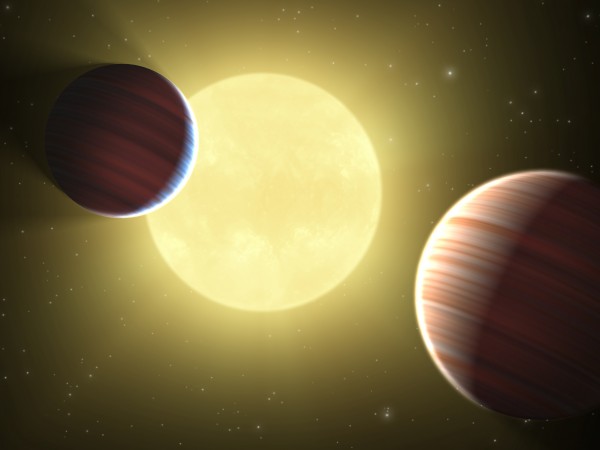
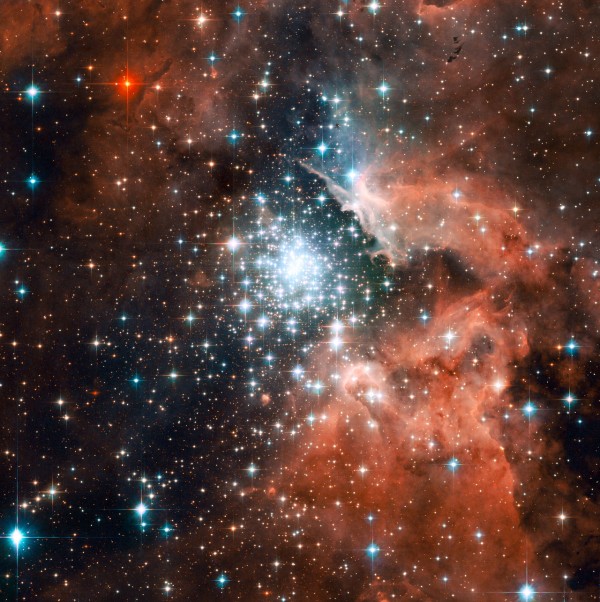
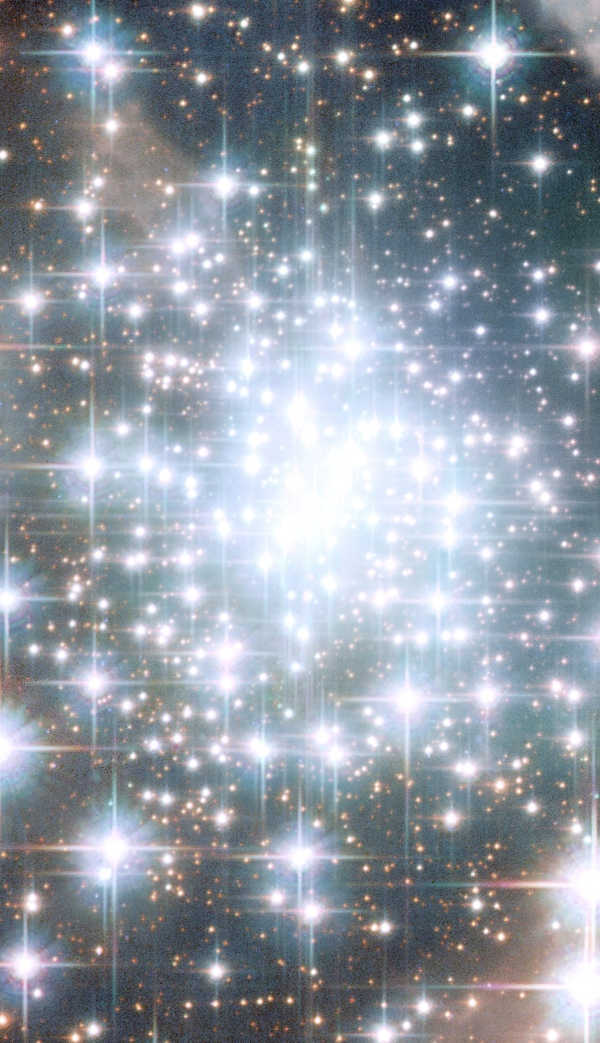
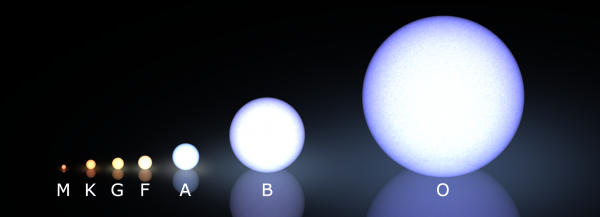
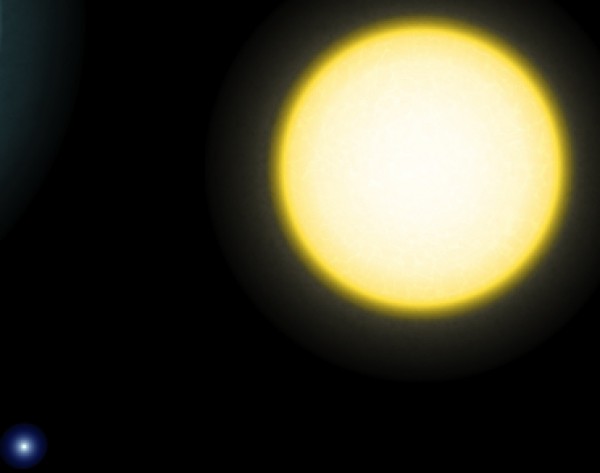
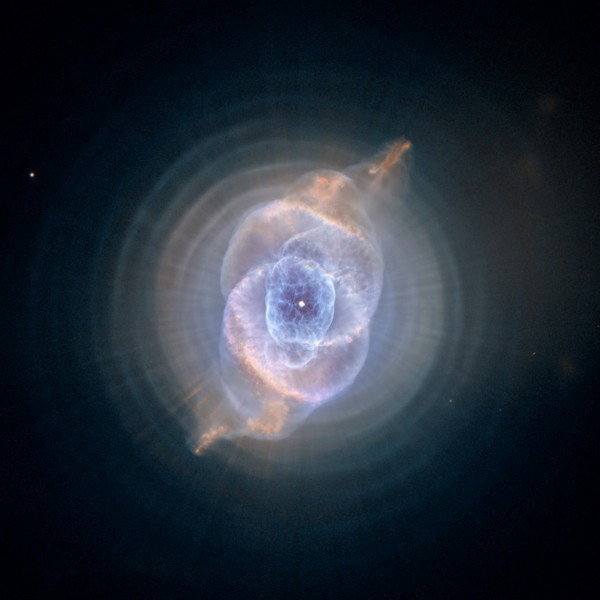
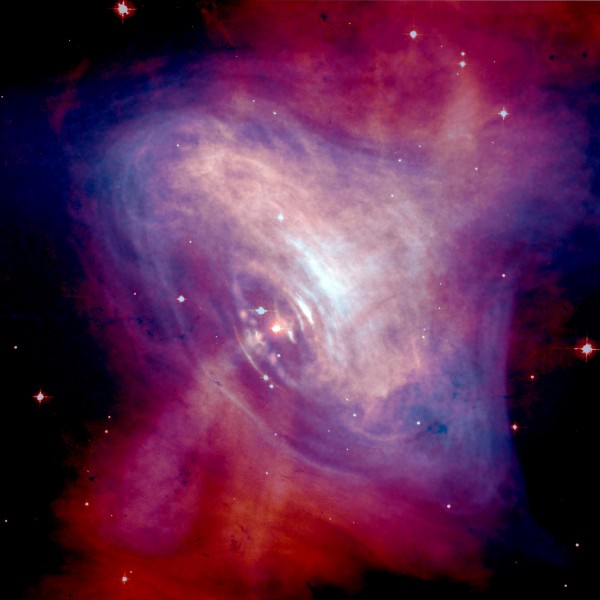
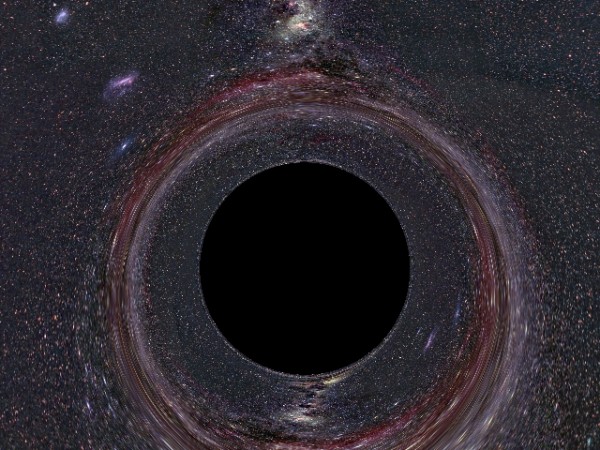
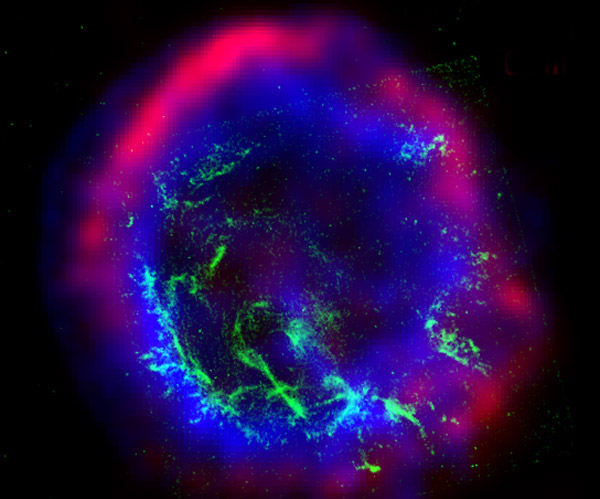
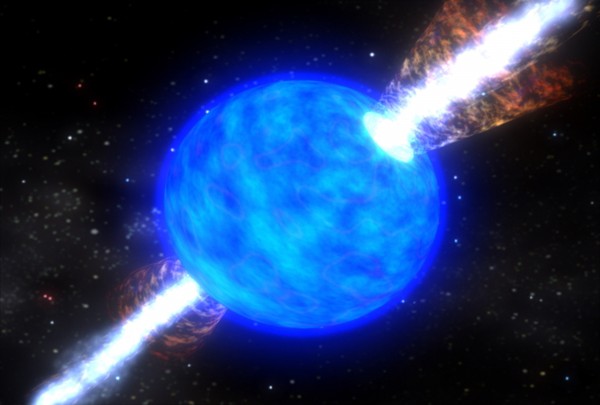
That was absolutely beautiful. Thanks.
Ethan, I've seen that star formation video a million times, and yet just now I went for the author. It turns out he has done a great deal more research and videos, including a 3D visualization and radiation consideration!! Check it out: http://www.astro.ex.ac.uk/people/mbate/Animations/
For some reason, you are no longer showing up in my feed reader. I've confirmed that I'm still subscribed- just not seeing recent posts.
abeille,
I am not showing up in my own feed reader, either. I am working with NatGeo to see whether this is a glitch that will be resolved, or whether I'll have to get the word out to everyone to subscribe to the new RSS feed for my blog.
If you can't wait -- and I don't blame you if you can't -- you can add the updated feed here: http://scienceblogs.com/startswithabang/feed/
So my big question? A big picture question?
What is going on?
" M-stars can live for many trillions of years, burning coolly and slowly through their fuel, eventually turning all their hydrogen into helium, and then simply contracting down in their entirety to form a degenerate ball of atoms: a white dwarf star."
Wiki says that M-stars are 76.45% of all main-sequence stars.
a site titled M-star evolution says, " M-stars can not be reliable 'aged' through standard methods which rely on the nuclear evolution of a star." http://www.astronomy.villanova.edu/lward/evolution.htm
Now with so many M-class stars, it would seem important to understand (independently) how old they are.
But if as Ethan says they really can live a trillion years and if we really believe that our visible universe is only 13.7 billion years old; then I would expect to find NO White Dwarfs. I mean if M-stars live 1 trillion years and degenerate into white dwarfs, well I wouldn't expect to see a white dwarf for maybe 250 billion years. Right? Well that's my reason.
But wiki says, " In January 2009, the Research Consortium on Nearby Stars project counted eight white dwarfs among the hundred star systems nearest the Sun.[" so white dwarfs are pretty common.
And I see that white dwarf research is active, this article
Extrasolar asteroids pollute white dwarf stars, by AMANDA DOYLE in ASTRONOMY NOW Posted: 30 March 2012 which says, "Unexpected elements have been found in the atmospheres of white dwarfs which suggest that the stars may have been eating broken-up asteroids."
Now whether white dwarfs eat asteroids or not is not my point. My point and my question is, Why are there any white dwarfs at all. Are some of those M-stars really 250 Billion years old or what is going on?
So my question, what is going on? Any help understanding the age of M-stars as it relates to the population of white dwarfs will be appreciated. This seems like a big area of research that is really important and that we know little about.
Just declaring that no white dwarf can be older than 13.7 billion years is not convincing. Is there no spectroscopic way to determine the age of M-stars and white dwarfs?
Please educate me. thanks.
Cool.
"But if as Ethan says they really can live a trillion years and if we really believe that our visible universe is only 13.7 billion years old; then I would expect to find NO White Dwarfs"
Our sun will die as a white dwarf.
Wow
I take your word.
Can you point me to some kind of flow chart of the evolution of stars.? By your comment I assume their are many paths to get to be a white dwarf. But I can't find any big picture flow chart.
thanks.
OKThen,
There are no HELIUM white dwarfs that were formed from the death of these low-mass stars. The vast majority of white dwarfs that we see are carbon-oxygen white dwarfs, that come from the type of stars I talked about subsequently: K-stars through low-mass B-stars.
But there are a few, rare helium white dwarfs that we've found, resulting, as far as we can tell, from multiple-star systems where mass loss (i.e., mass thievery) has played a big role.
Sorry I don't know where one big, beautiful chart is. Maybe someday, I'll make one!
Ethan
aah, thank you. so there are different types of white dwarfs from different types of stars. Nice.
No this helium white dwarf stuff is really interesting.
here
http://www.technologyreview.com/blog/arxiv/27331/
"It turns out that helium condensates have an extraordinary rich behaviour in which various kinds of quasiparticles can form. These quasiparticles are essentially quantised excitations in the condensate and have been well studied for ordinary condensates... Bedaque and co have found is an entirely new quasiparticle that emerges in helium white dwarfs.. This quasiparticle.. reduces the specific heat of the white dwarf core by two orders of magnitude compared to a crystalline core... etc..." OK that's enough.
here's another interesting Helium white dwarf story
http://www.sciencedaily.com/releases/2009/04/090423100808.htm I'll let you read it
Nice, so I'll ponder some more.
Oh wait, I just found a cool stellar evolution chart. The nice thing about this chart is that it shows 2 paths toward becoming a white dwarf.. but neither of them seem to be coming from an M-star and one of them goesType 1a superNova. Oh well somebody please explain.
thanks.
oops I forgot to put the link to stellar evolution chart
http://chandra.harvard.edu/edu/formal/stellar_ev/poster_horiz_med2.jpg you need to blow it up
"lieves something behind"
I think in my long life (I am 83 years old) and as the son of a protestant reverend, I never have heard/read a better sermon on Pentecoast/Memorial day as your blog. Many thanks.
Hans
"The biggest difficulty in using white dwarfs to estimate the age of the universe is that white dwarfs are very faint and so are very difficult to observe. Most studies of white dwarf ages have concentrated on the solar neighborhood, in an effort to determine the age of the local disk of the Milky Way... A direct estimate for the minimum age of the universe can be obtained by determining the age of the oldest objects in the galaxy. These objects are the metal-poor stars located in the halo of the Milky Way. There are currently three independent techniques which have been used to determine the ages of the metal-poor stars in the Milky Way: nucleochronology, white dwarf cooling theory, and main sequence turn-off ages. .. White dwarf cooling theory is difficult to apply in practice, as one needs to observe very faint objects. Currently, it is impossible to observe the faintest white dwarfs in a globular cluster, so white dwarf cooling theory can only provide a lower limit to the age of a globular cluster.
Based upon the luminosity of the faintest observed white dwarfs..." OK that's enough from http://arxiv.org/pdf/astro-ph/9808200v1.pdf
Just sharing what I'm finding interesting.
OKThen, the Hertzprung-Russel diagram is the chart that tells you how stars evolve: move from Main Sequence to (either) Red Giant or White Dwarf
Just go along to Wikipedia and check that out, along with anything from there on stellar evolution.
Unfortunately, it's rather a basic question and these are the hardest ones to answer (which is why answering a three-year-old's "why?" is so hard for parents to manage...)
Thanks.
On the idea of basic questions are the hardest ones to answer; I'm just reading a book titled: Ignorance (How it Drives Science) by Stuart Firestein. It's a fast read by a Columbia University neurobiologist.
At any rate a really good question may not be easy to answer; but it may take a field in an unexpected direction,i.e. create more and better ignorance. There is an aspect of quality to ignorance. High quality ignorance is expansive; low quality dim-witted. An inquisative 3-year olds questions are never dimwitted.
Enrico Fermi told his students that an experiment that successfully proves a hypothesis is a measurement; one that doesn't is a discovery. A discovery is an uncovering of new ignorance.
Just rambling, thanks for the point to the Hertzprung-Russel diagram
The problem is more that a blog post isn't anywhere near enough. And the medium far too limiting (a picture paints a thousand words and all that).
And for someone who knows enough to answer, the extra burden of working out where to start with the knowledge. I.e. too far back and it's baby talk, not far enough and you still have to go on about even more basic work. And where do you stop?
To explain how semiconductors work you need to go into QM and solve the equations for a simple two-hydrogen bound system to show the valency energies, expand that to a planar system to show how those energies get bradened into bands and then how this will result in a conduction band that requires energy imparted to the electrons to start moving. Hence semiconductors.
Or explaining the platypus needs to go into the entire theory of evolution and specialisation to show how the species changed into mammals, then show how isolationism and a lack of change means that there is no evolutionary pressure and therefore you still get a platypus in Australia.
Both are VERY long and detailed.
And working out where to start, what to cover and how to do it in a text-only form not easy.
Hence a lot of "Go look on Wikipedia" which appears a little like palming you off, but is really only the best way of answering the question with the limits of the communication method here.
So what will the universe leave behind, when there isn't enough hydrogen left to form any more stars?